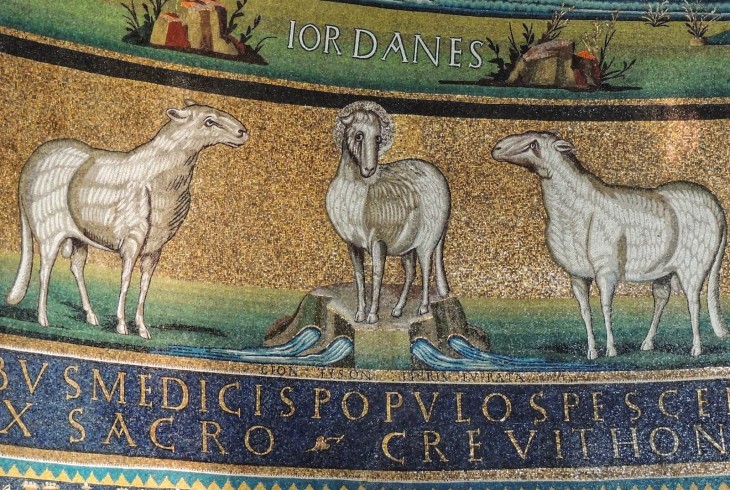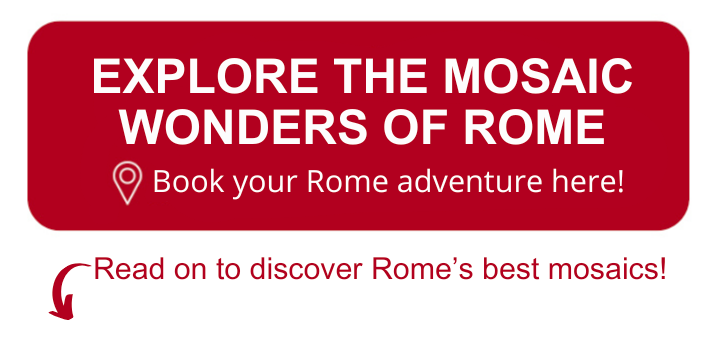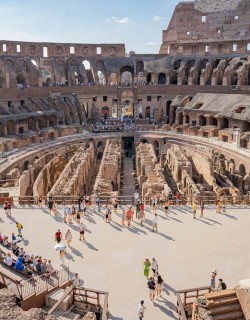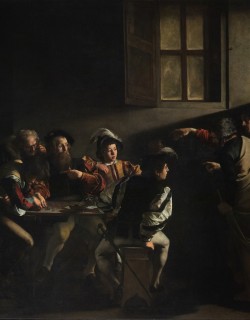You probably know that Rome is one of the world’s great destinations for art lovers. With epoch-defining masterpieces like Michelangelo’s Sistine Chapel, Raphael’s School of Athens and the largest collections of classical sculptures on earth, if art is your thing then the Eternal City is the gift that keeps on giving. But look beyond these highlights, and there’s a whole world of fabulous art that most visitors to Rome tend to ignore. We’re talking mosaics.
Made from thousands of tiny pieces of glazed colored glass affixed to layers of mortar, mosaic is an ancient technique whose extraordinary durability made it a favorite art form in the ancient and medieval world. Rome’s churches in particular are home to an incredible array of mosaic masterpieces, from mysterious early-Christian declarations of faith to astonishing examples of medieval spirituality.
Join us this week on our blog as we embark on a journey of almost 1,000 years to discover glittering highlights of the mosaicist's art all across the Eternal City. Along the way we’ll be visiting some of Rome’s most famous basilicas as well as hidden churches far from the usual tourist itineraries.
Santa Maria Maggiore
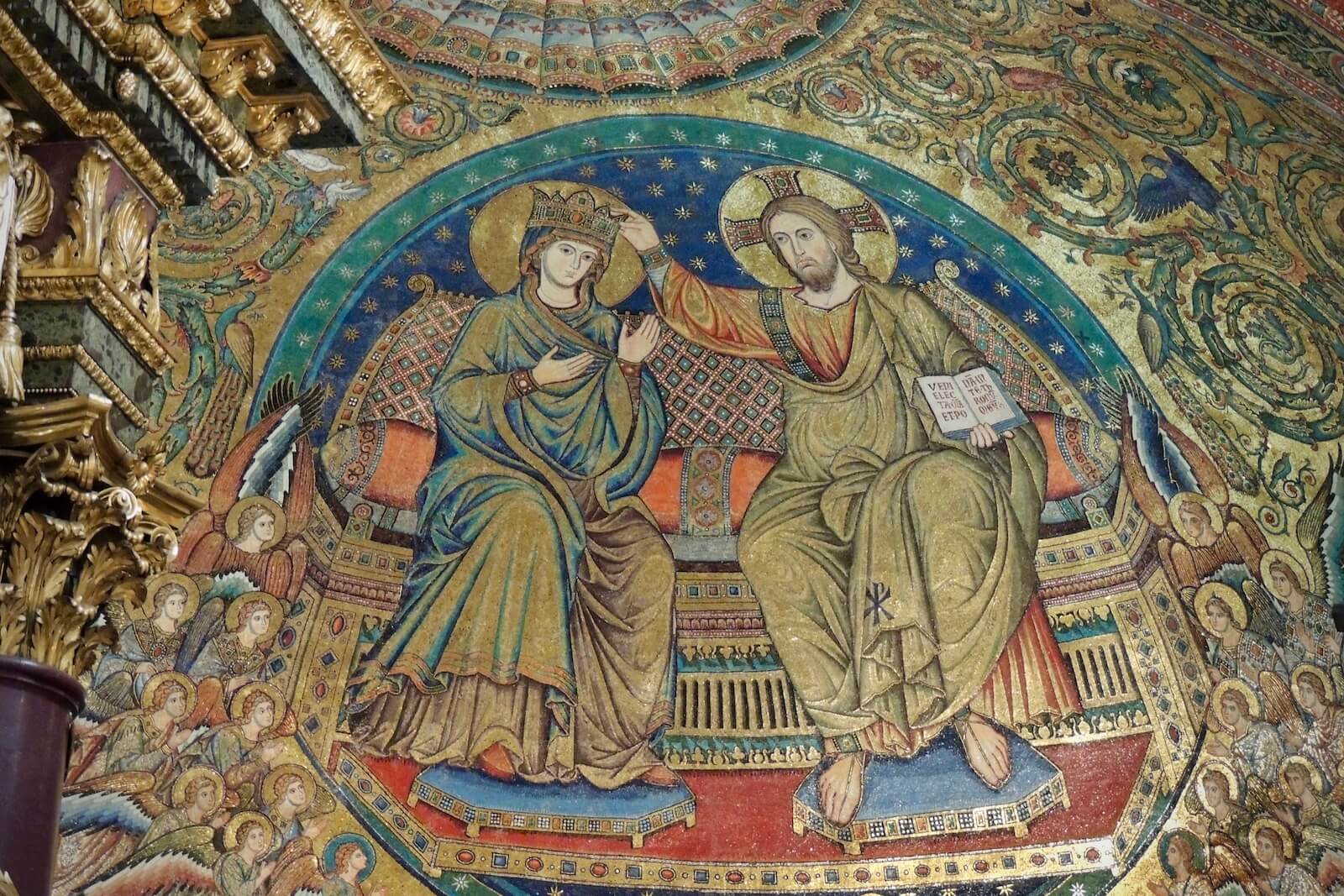
Santa Maria Maggiore is the oldest basilica dedicated to the Virgin Mary in Rome, and boasts arguably the most extensive collection of mosaics in the city, dating from two separate decorative campaigns.
Running along the upper walls of both sides of the nave, a pictorial cycle consisting of 27 mosaics (originally there were 42) portray key events from the Old Testament. Absolute masterpieces of paleochristian art, these 5th-century artworks showcase the fabulous skill of ancient Roman artists turned towards a new goal of immortalizing the heroes of Christian doctrine - Abraham and Isaac, Joshua, Moses and others.
The mosaic masterpieces at Santa Maria Maggiore don’t end there. Fast forward to the end of the 13th century, and the reign of Pope Nicholas IV. As part of a grand restoration campaign in the now venerable basilica, Jacopo Torriti was called on to create a new mosaic for the church’s apse, where Christ and the Virgin Mary appear crowned in heavenly glory surrounded by creeping acanthus vines.
The contrast between this mystical and abstract medieval vision and the sober, classical ancient mosaics in the nave perfectly illustrates the evolution of artistic style in Rome over 1,000 years.
Santa Costanza
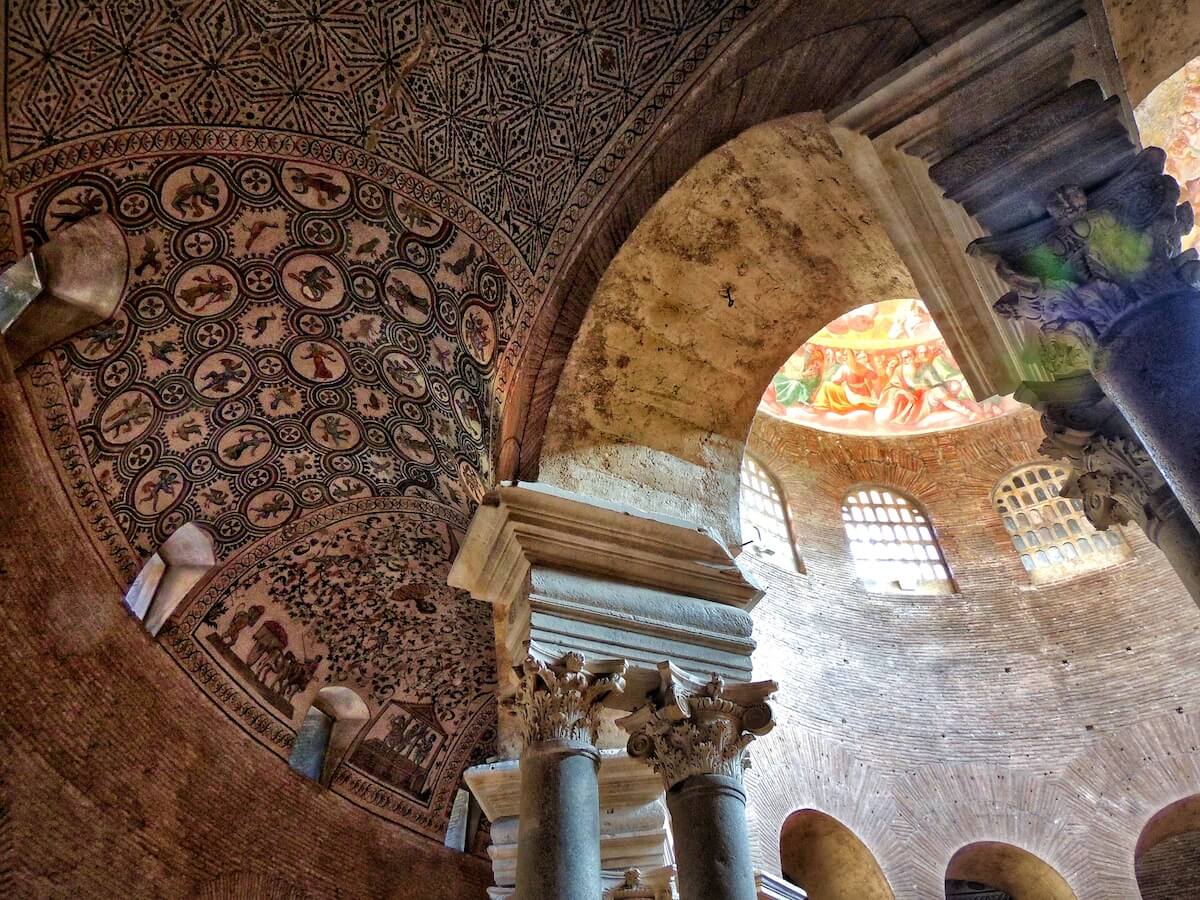
One of the most important repositories of early-Christian art and architecture in Rome, the so-called mausoleum of Santa Costanza is a fascinating historical time capsule that helps us trace the city’s transformation from the capital of a pagan empire into the most important site of Christendom in the 4th century AD.
The vaults of the circular mausoleum are covered with marvellous mosaics that freely combine spiritual themes with scenes from everyday life. Abstract geometric details stand alongside designs featuring dolphins, creeping vines and a veritable cornucopia of plants, fruits and flowers that showcase the superabundance of nature’s bounty - a theme common to both pagan Roman decorations and Christian conceptions of God’s role in the universe.
Look out for two fascinating scenes depicting winemaking. In one, grapes are crushed in a winepress, while in the other, the finished wine is transported to Rome by a pair of oxen urged forward by their driver.
Read more about the Santa Costanza mosaics here: The Mausoleum of Santa Costanza: Ancient Mosaics between Pagan and Christian Rome.
Santa Pudenziana
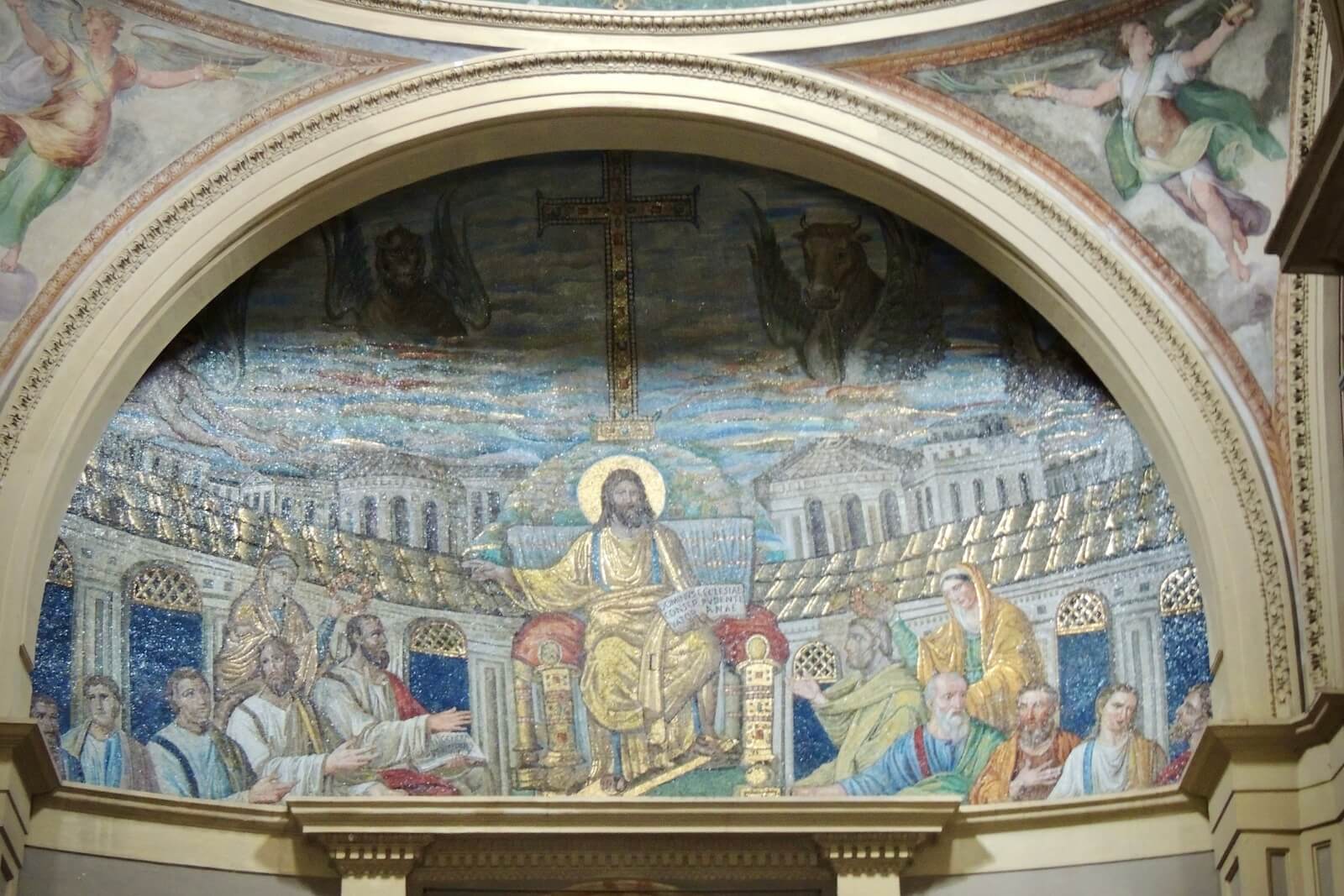
Despite the fact that you won’t see Santa Pudenziana on most tourist itineraries in Rome, this venerable basilica is home to an extraordinary hidden treasure inside. The church itself is one of the very oldest in Rome, with origins dating all the way back to the second century AD and its apse mosaic is a stunning example of early-Christian art.
Commissioned by Pope Innocent I in the wake of the Gothic sack of Rome in 410 AD, the mosaic portrays Christ seated on an emperor's throne, flanked by apostles dressed in the distinctive togas of Roman senators - this fascinating fusion of Roman imperial iconography and classical style with Christian themes showcases the pivotal transformation of ancient Roman civilization into a new Christian era.
Above, the four evangelists appear in the guise of living creatures - an angel, lion, ox and eagle - one of the first times in history that this subsequently commonplace device was utilised. This beautiful mosaic was to have a seismic impact on the story of western art, and established many aspects of Christian iconography that you’ll see repeated all across Rome and beyond.
Santa Maria in Trastevere

At the heart of Trastevere’s dense network of cobbled streets stands magnificent Santa Maria in Trastevere, home to one of Rome’s greatest medieval artistic treasures. Commissioned by Trastevere local Pope Innocent II to celebrate his triumph in a bitter internecine battle for the papacy in the 11th century, the apse mosaic features Christ and a fabulously attired Virgin Mary enthroned in glory surrounded by saints and religious figures including Pope Innocent himself.
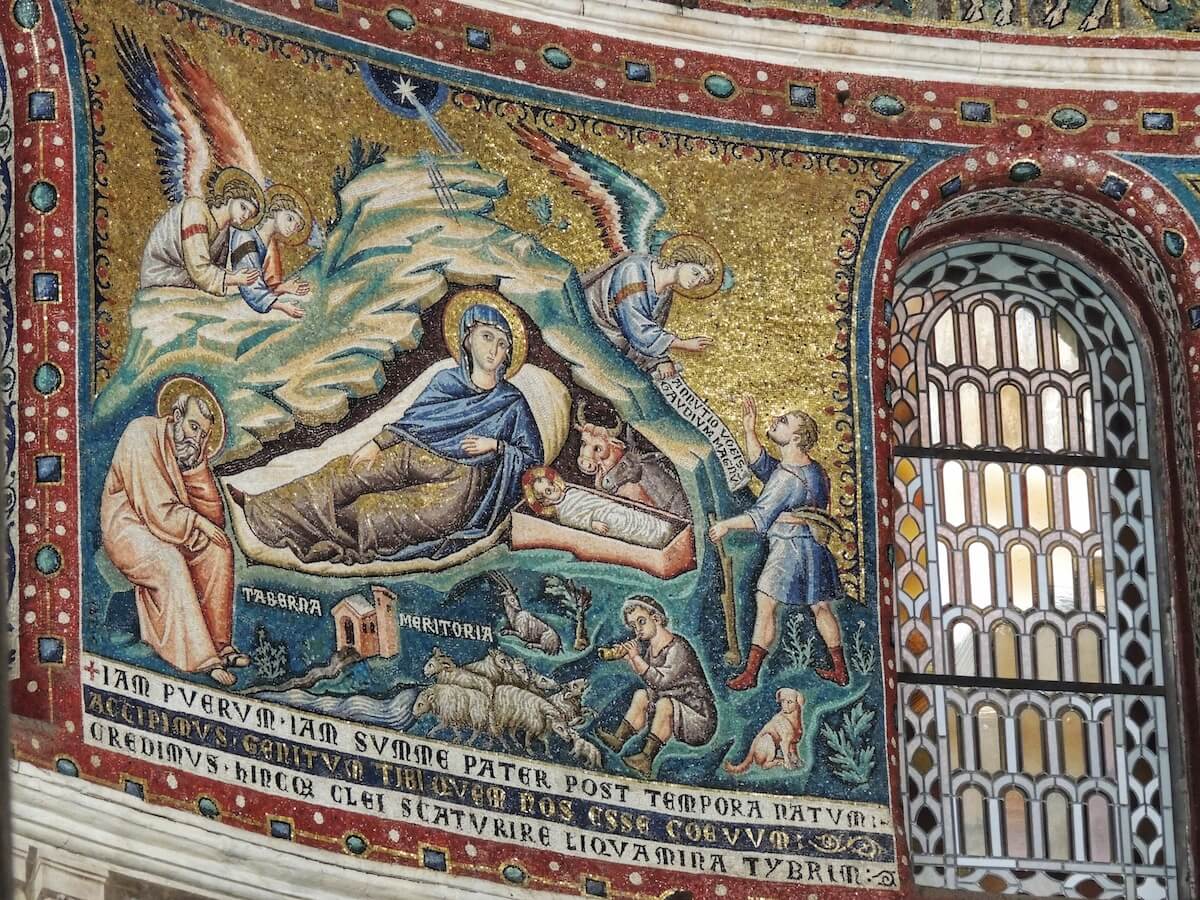
A dazzling further series of mosaics were created by pioneering artist Pietro Cavallini in the closing years of the 13th century at the behest of local bigwig Bertoldo Stefaneschi, and these are arguably even more impressive: Taking us through the story of the Life of the Virgin Mary, Cavallini’s amazingly naturalistic style and eye for realism are clear forerunners of the onrushing Renaissance.
Read more about Cavallini’s mosaics here: Renaissance Stirrings in Medieval Rome: Pietro Cavallini’s Mosaics in Santa Maria in Trastevere.
Santa Prassede
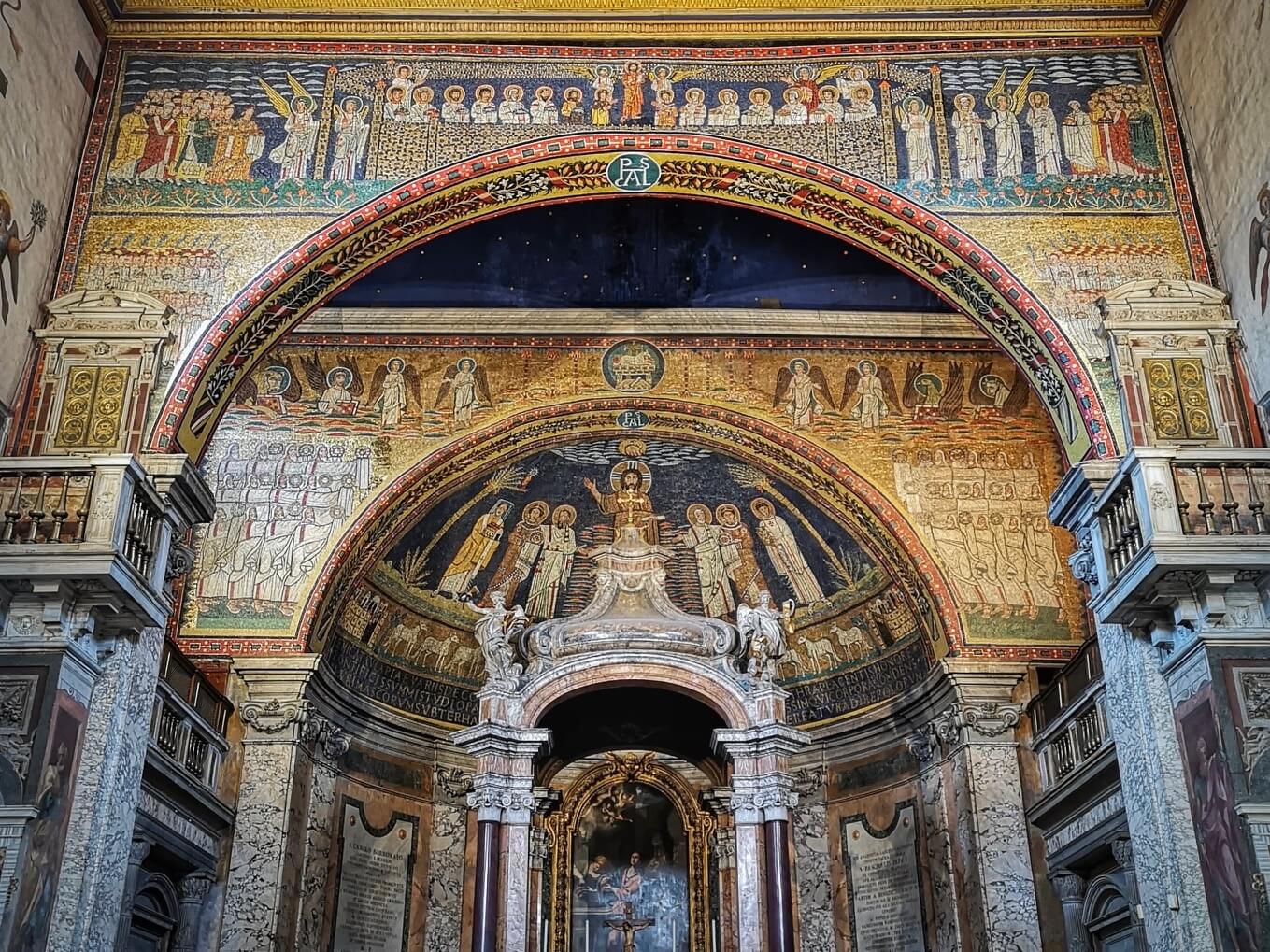
The 9th-century reign of Pope Paschal 1st ushered in a great golden age of art in Rome, revitalizing the battered Dark-Age city in the process. As a wave of iconoclasm devastated the prospects of artists and mosaicists in contemporary Constantinople, the enterprising pontiff invited the newly unemployed craftsmen to Rome with open arms, commissioning them to beautify the city’s churches - and burnish his own family’s legacy.
Byzantium’s loss was Rome’s gain, and perhaps the most spectacular result of this happy coming together is the marvelous church of Santa Prassede. A series of glittering mosaics decorate the church’s sanctuary, featuring an array of apostles and angels, as well the pious sisters Prassede and Pudenziana themselves, dressed in the opulent outfits of Byzantine princesses. Look closely at the mosaics in the apse and you’ll see Paschal himself offering up a model of the renovated church to God.
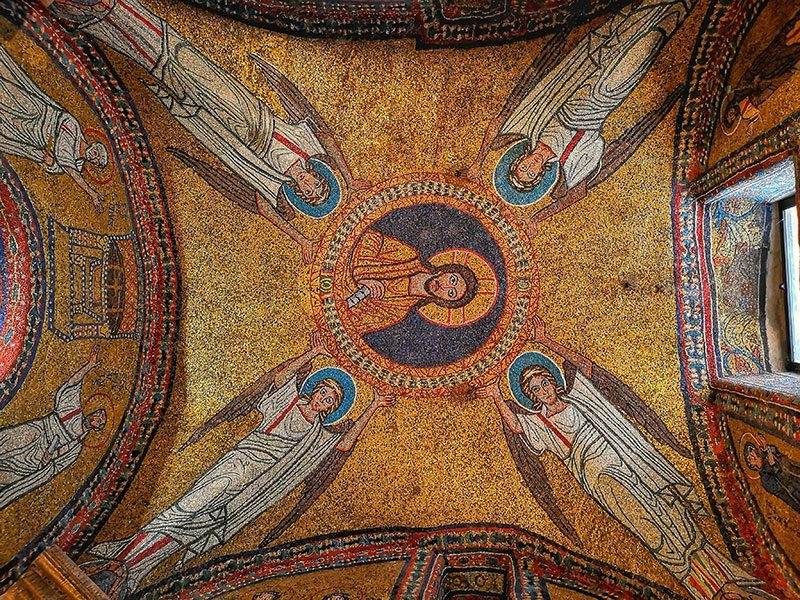
But there’s more: concealed off the church’s right hand aisle, the chapel of San Zeno is one of the greatest artistic hidden gems in all of Rome. Here jaw-dropping golden mosaics portray Christ being carried aloft by four angels alongside scenes from the Bible and the lives of the Saints. The amazing chapel was commissioned as the final resting place for Paschal’s mother Theodora, who you can spy in one of the mosaics - her square nimbus halo indicates that she was still alive when the mosaics were completed.
Read more about the mosaics here: The Spectacular Byzantine Mosaics of Saint Zeno's Chapel in Rome.
Santa Cecilia in Trastevere
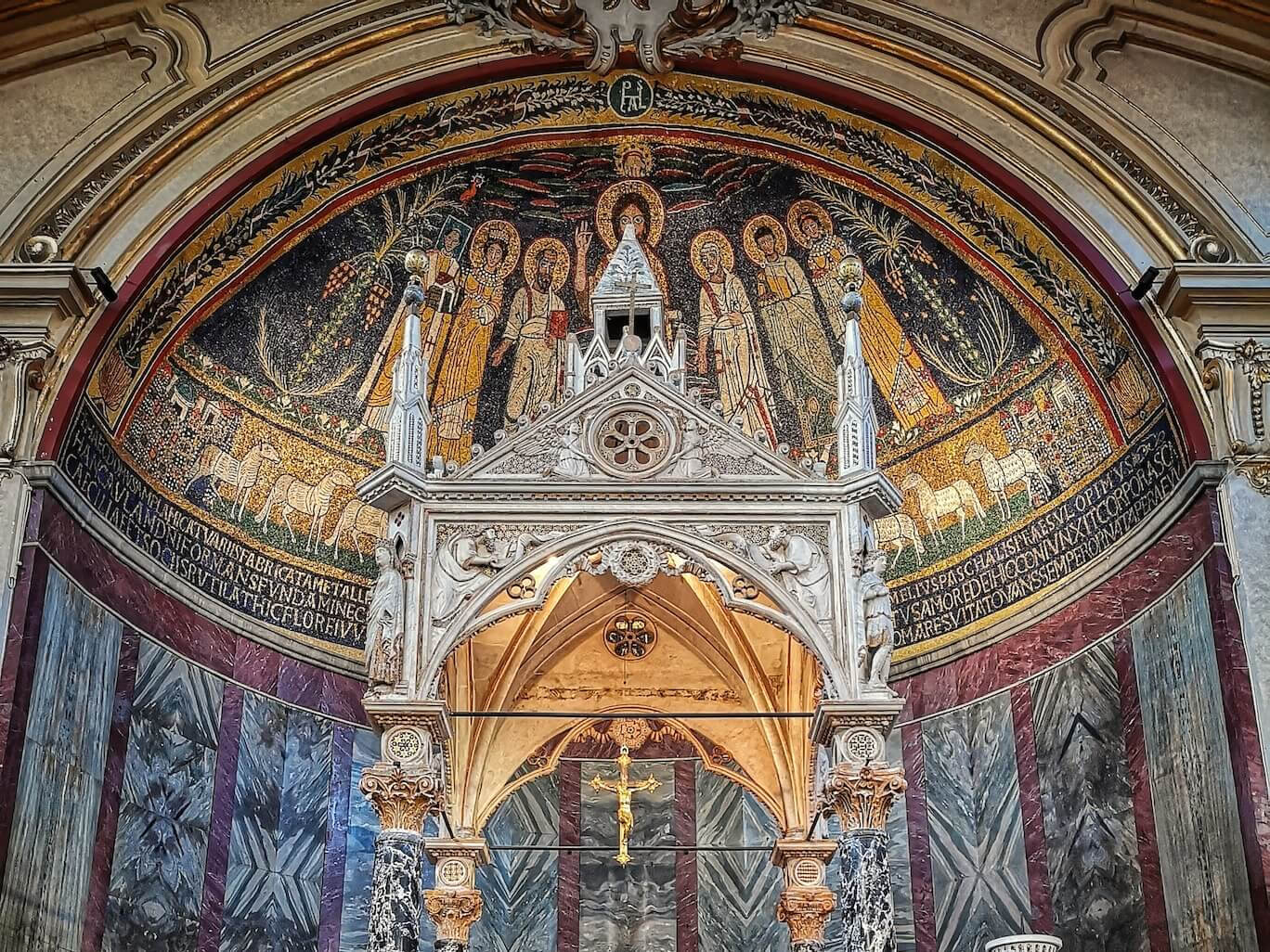
Another Paschal-sponsored banger, the apse of Santa Cecilia in Trastevere is decorated by a beautiful mosaic featuring a bearded Christ surrounded by saints - Agatha and Cecilia herself appear bedecked in the fabulous guises of Byzantine princesses, and wear fabulous jewellery as well as some seriously natty red shoes. Cecilia’s husband Valerian stands alongside the titular saint, while venerable Peter and Paul are recognisable thanks to their luxuriant beards.
And Paschal? Well, you’ll probably recognize his features by now! He’s standing at the far left beneath a palm tree, in whose boughs perches a bird of paradise. Once again clutching a model of the church he was responsible for rebuilding, the pope sports a square blue nimbus instead of a conventional halo, signifying that he was still alive at the time the artwork was made.
San Paolo Fuori le Mura
Like Santa Maria Maggiore across town, the Papal basilica dedicated to Saint Paul sees two very different moments in the history of Christianity in Rome brought into direct and fascinating contrast.
The mosaics adorning what is known as the Arch of Galla Placidia - financed by the pious daughter of emperor Theodosius I, who was also instrumental in the artistic patronage of her native Ravenna - date from the middle of the 5th century and depict an apocalyptic vision from the Book of Revelation. Here 24 white-bearded elders gaze up at the figure of Christ as four strange winged beings hover in the sky above. Unfortunately this mosaic was much damaged during a devastating 19th century fire, and much of what we see dates to a subsequent restoration.
Head further into the church and you’ll reach the apse, where a glittering mosaic, fully 24 meters wide, portrays a majestic enthroned Christ holding open a book on his knees, in which we can read words relating to the Last Judgement: “Come, blessed by my Father, to receive the kingdom that has been prepared for you from the foundation of the world.”
Although this mosaic too has been restored, it still displays superb craftsmanship. And little wonder: the work was created by the same Venetian masters that worked on the mosaics of San Marco, and remain amongst the highlights of Byzantine art in Rome.
Santi Cosma e Damiano
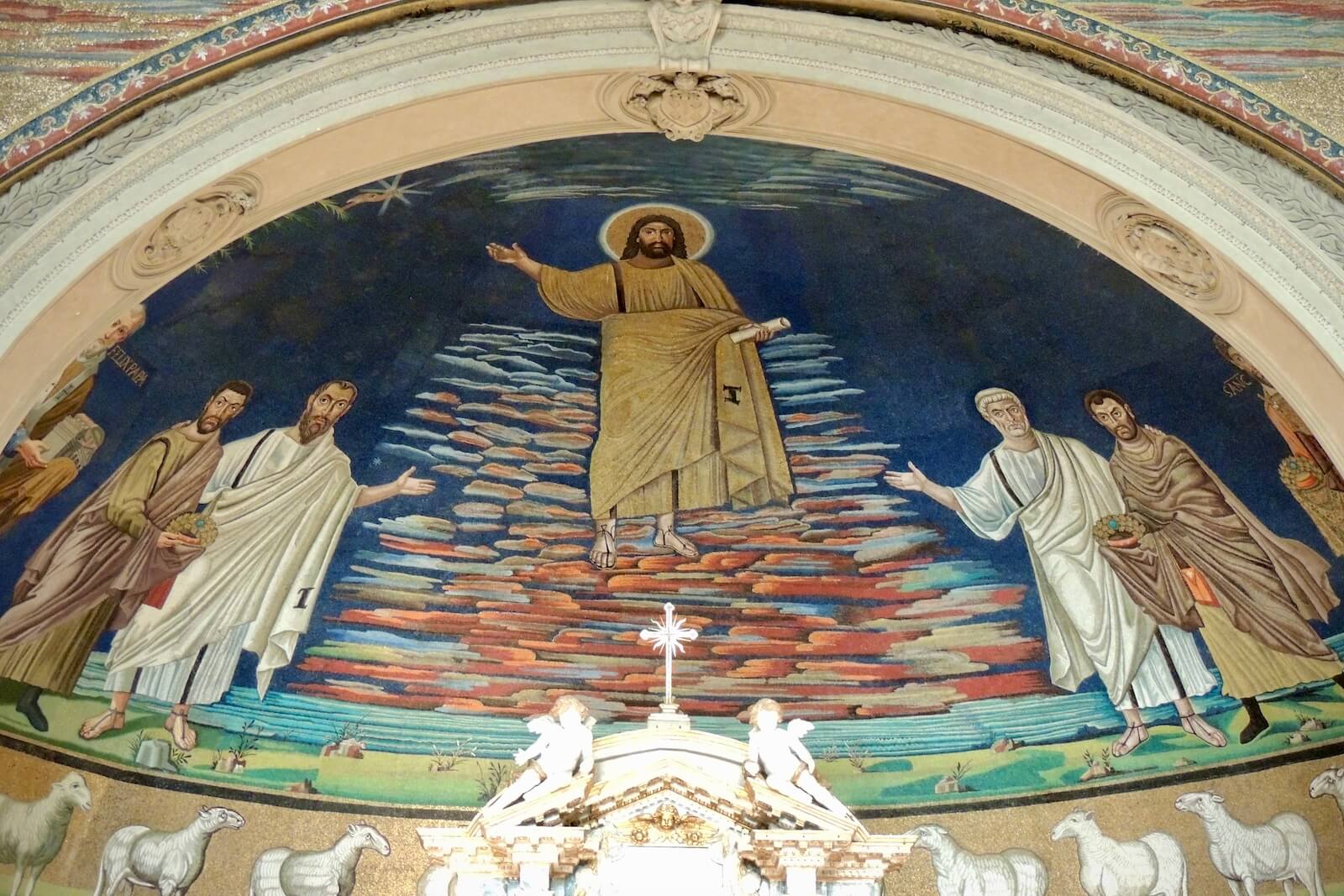
The sixth century mosaics that decorate the apse of Santi Cosma e Damiano near the Roman Forum are amongst the earliest - and most interesting Christian mosaics in the Eternal City. Dating from the reign of Pope Felix IV, the mosaics formed part of a concerted effort to “Christianize” the building, which was originally a pagan temple.
At the centre of the action is an adult Christ in his prime, descending to earth on a technicolour stairway of orange clouds to preside over the Last Judgement: the scene seems to be part sacred narrative, part LSD trip. To the sides the titular Cosmas and Damian are being introduced to Christ by saints Peter and Paul, whilst Pope Felix himself humbly presents a model of the church to the son of God beneath a palm tree on whose boughs sits a phoenix, symbol of Resurrection.
Some pretty incredible anthropomorphic sheep represent the apostles below, surrounding Christ imaged as the haloed lamb of God presiding over the four rivers of the world.
San Clemente
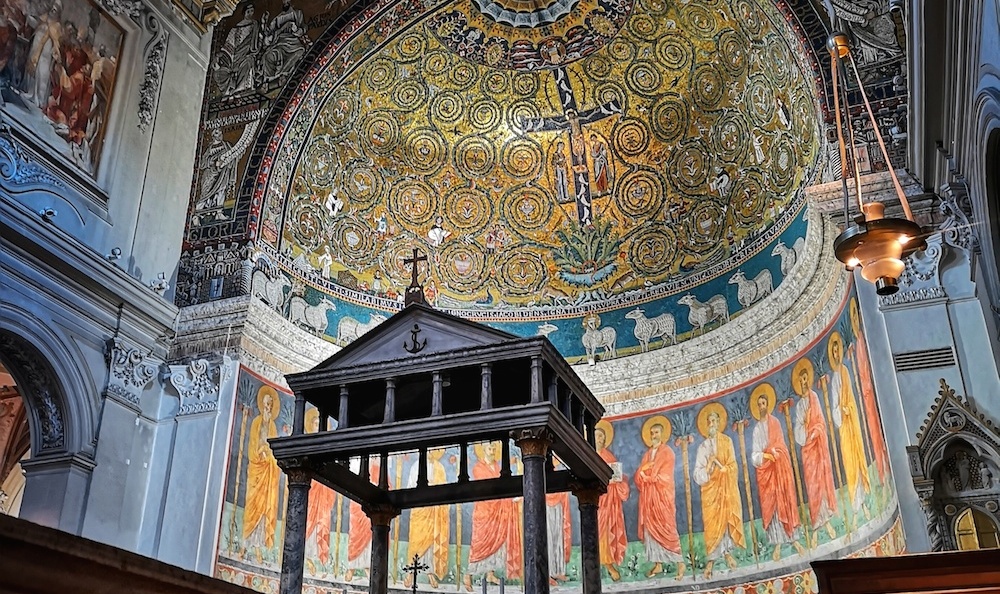
“I am the vine; you are the branches. If you remain in me and I in you, you will bear much fruit; apart from me you can do nothing.”
So said Christ to his apostles in the Gospel of John, and his memorable utterance would be visualised in beautifully literal terms by countless medieval mosaicists in the so-called Tree of Life iconography - nowhere more spectacularly than in the Roman church of San Clemente.
In this complex and very beautiful 12th-century mosaic, Christ is pictured nailed to a dove-covered cross emerging from an acanthus bush, with endless coils of vines snaking their way from the wood all across the golden ground of the apse.
Look closely and you’ll see all sorts of figures amongst the coils going about their everyday life: clerks and scholars, farmers and shepherds, writing and teaching, sowing and reaping. The message of the medieval mosaic is clear - all things are made possible by Christ’s sacrifice.
The luminous mosaics in San Clemente are a must-see for art lovers in Rome - read more about them here: The 7 Wonders of San Clemente.
Santa Maria in Cosmedin
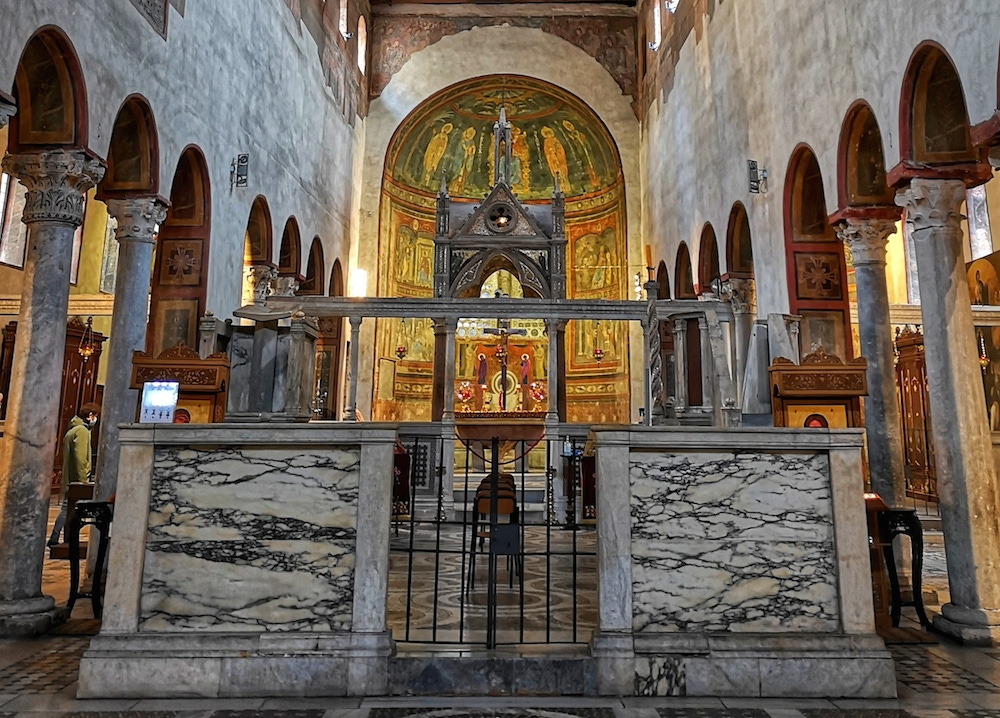
You’ll probably be familiar with the entrance loggia of Santa Maria in Cosmedin, as this is where you’ll find the Bocca della Verita, or Mouth of Truth. But the medieval church has much to recommend it inside, too. Hidden away in the basilica’s sacristy is a fascinating mosaic fragment depicting the Adoration of the Magi, which once graced the interior of Old St. Peter’s Basilica itself. The fragment dates all the way back to the 7th century AD, and was commissioned by Pope John VII.
After the oratory inside St. Peter’s that housed the mosaics was destroyed in the early 17th century, the Adoration of the Magi was gifted to the church of Santa Maria in Cosmedin, where it has resided ever since. The lovely image features the Virgin Mary seated on a throne, holding Christ on her knee. In a beautifully naturalistic gesture, the excited child reaches out towards the box of gifts proffered by a hand extending from the right - one of the kings who travelled in the wake of a star to find the newborn king.
Santa Maria in Domnica
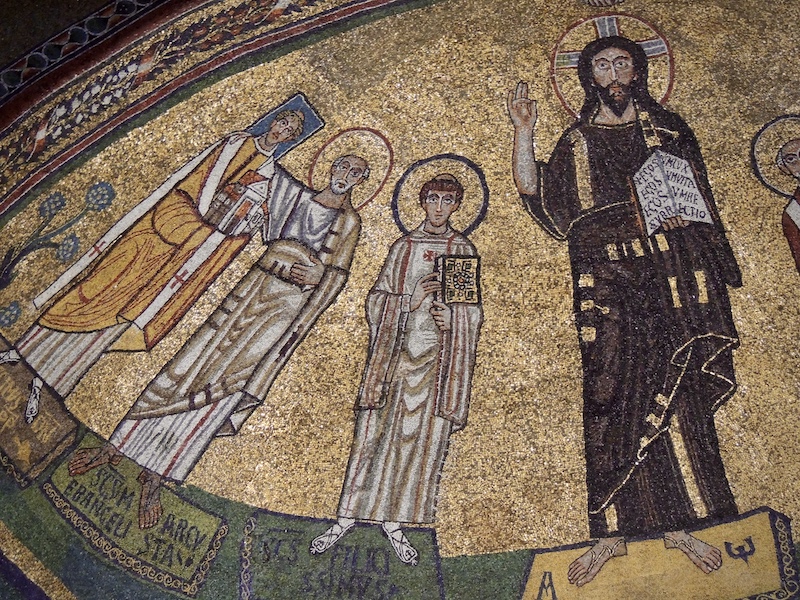
The third mosaic on our list that we owe to Pope Paschal (remember him?) is located in the church of Santa Maria in Dominica, most famous for its stunning wooden ceiling donated by Cardinal Ferdinando de’ Medici in the 1500s.
The marvellous mosaic features the Virgin Mary and Christ child enthroned at the center, surrounded by a heavenly troupe of angels clad all in white.
And who’s that dressed in yellow kneeling before the Virgin and reverentially taking hold of her red shoe? Yep, it’s our man Paschal! The pontiff’s insignia is imprinted onto the underside of the arch at the center of the mosaic, just in case you were in any doubt.
We love the naturalistic details of the decorations here - look out particularly for the blooming flowers of the meadow in which the action takes place, as well as the detailing of Mary’s throne. A long Latin inscription below elegantly outlines Paschal’s lasting contribution to the urban fabric of Rome, and it’s worth translating in its entirety here:
“This house before had been reduced to ruins, now it sparkles eternally decorated with various metals / And its magnificence shines like Phoebus in the universe who puts to flight the darkness of the gloomy night. / O Virgin, the valiant Bishop Paschal founded for you this royal hall that must remain splendid through the centuries.”
And splendid it remains, more than a thousand years later!
San Giovanni in Laterano
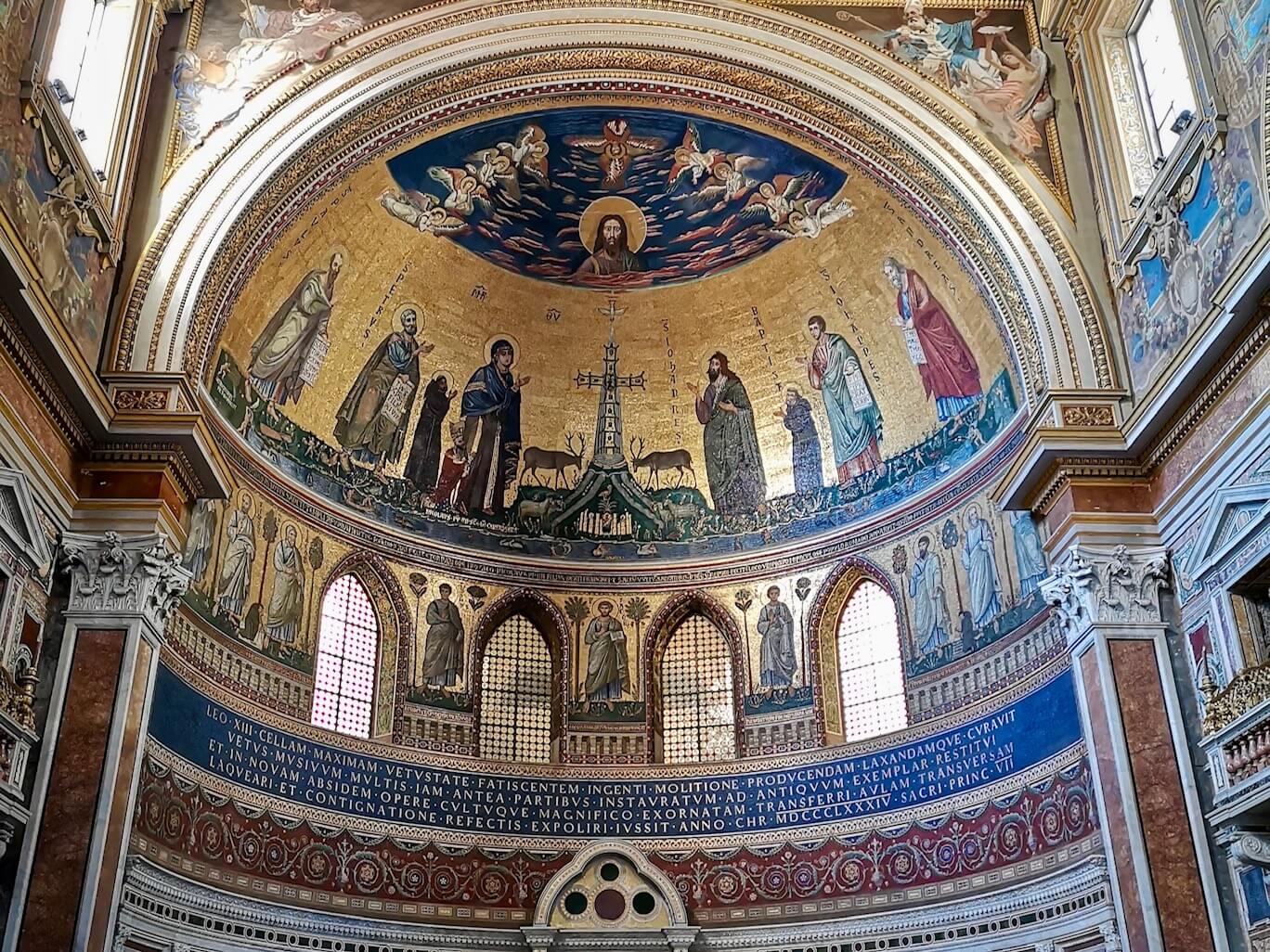
Although heavily restored in the 19th century, the massive apse mosaic in Rome’s cathedral of San Giovanni in Laterano remains one of the most important 13th-century artworks in the Eternal City. Depicting the very realistic face of a disembodied Christ emerging from a sunset sky surrounded by angels surmounting various saints adoring a gemmed cross, the mosaic was made by Jacopo Torriti in the 1290s.
Amongst the holy personages feature the two modern saints of the 13th century, Saint Francis and Saint Anthony. According to legend, the near-contemporary mystics were added to the composition by the artist himself, without the approval of Pope Boniface VIII. Efforts to remove the interlopers were in vain, however, as the figures proved miraculously resistant to attempts to replace them.
San Crisogono
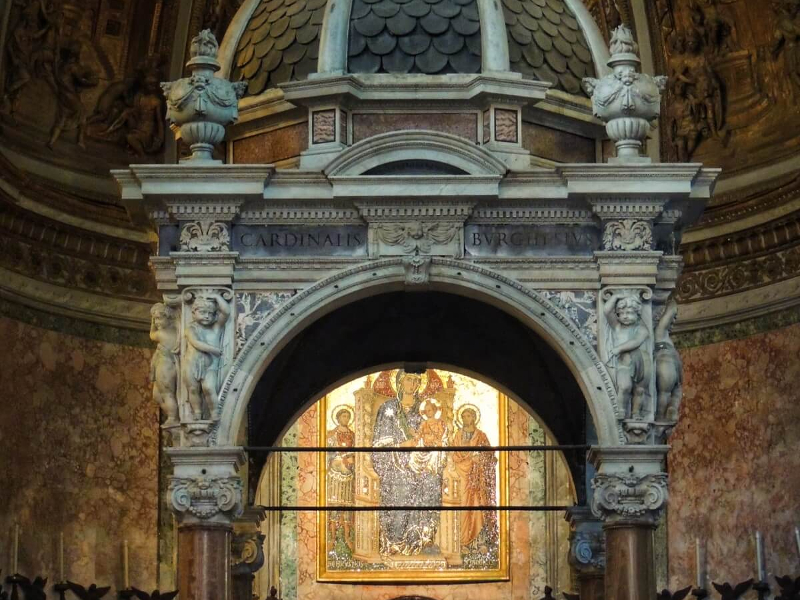
The basilica of San Crisogono is one of the most beautiful churches in Trastevere, and boasts a history stretching all the way back to the 4th century. Usually empty except for the odd faithful parishioner or intrepid traveller, the church boasts a 12th-century altar topped by a magnificent 17th century canopy. Behind, a beautiful 13th century mosaic of the Virgin and child alongside saint Crisogono himself is the work of Pietro Cavallini, one of the most important artists of medieval Rome.
Santa Francesca Romana
Another fabulous palimpsest, the church of Santa Francesca Romana makes our list for the 12th century mosaic that graces its apse. Here the Madonna and child are flanked by Christ’s disciples James, John, Peter and Andrew, while the hand of God shoots down from clouds about to crown Mary with a laurel wreath. Each of the figures is enclosed in a semicircular niche, intended to represent the architecture of an imperial palace - a motif also seen in the superb mosaics in the basilica of Sant'Apollinare Nuovo in Ravenna.
We hoped you enjoyed our guide to where to find the most beautiful mosaics in Rome! If you're coming to the Eternal City in 2025 to celebrate the Jubilee, then make sure to check out our range of new itineraries where we explore the most fascinating Christian sites in Rome, from St. Peter's Basilica to San Giovanni, Santa Maria Maggiore and more!
MORE GREAT CONTENT FROM THE BLOG:
- What to See in Santa Maria Maggiore
- Ancient Mosaics in the Mausoleum of Santa Costanza
- Pietro Cavallini’s Mosaics in Santa Maria in Trastevere
- The Spectacular Byzantine Mosaics of Saint Zeno's Chapel in Rome
- The Miraculous Corpse of Saint Cecilia
- Everything you Need to Know About Visiting Rome
- 6 Most Ancient Churches in Rome
- Where to See the Glorious Mosaics of Ravenna
- The 7 Wonders of San Clemente
- Visiting the Vatican Museums and St. Peter's Basilica: The Complete Guide
